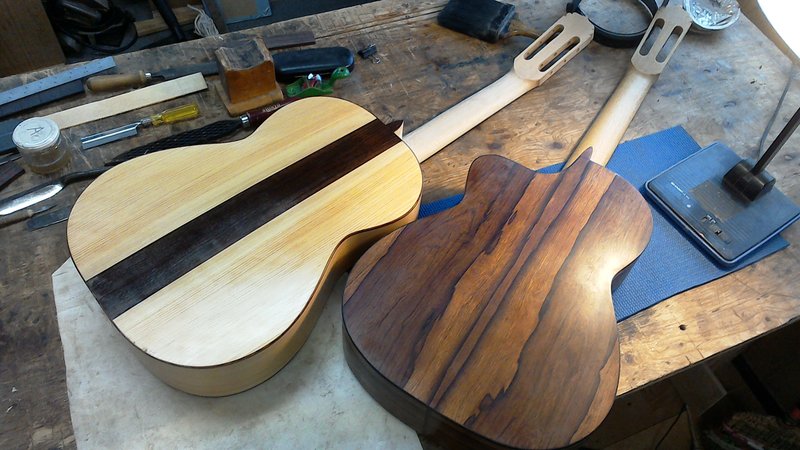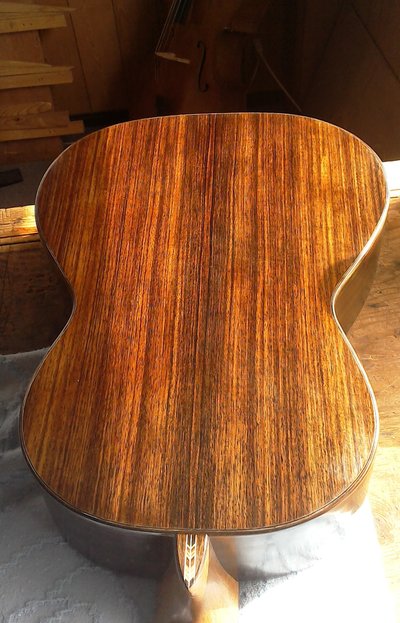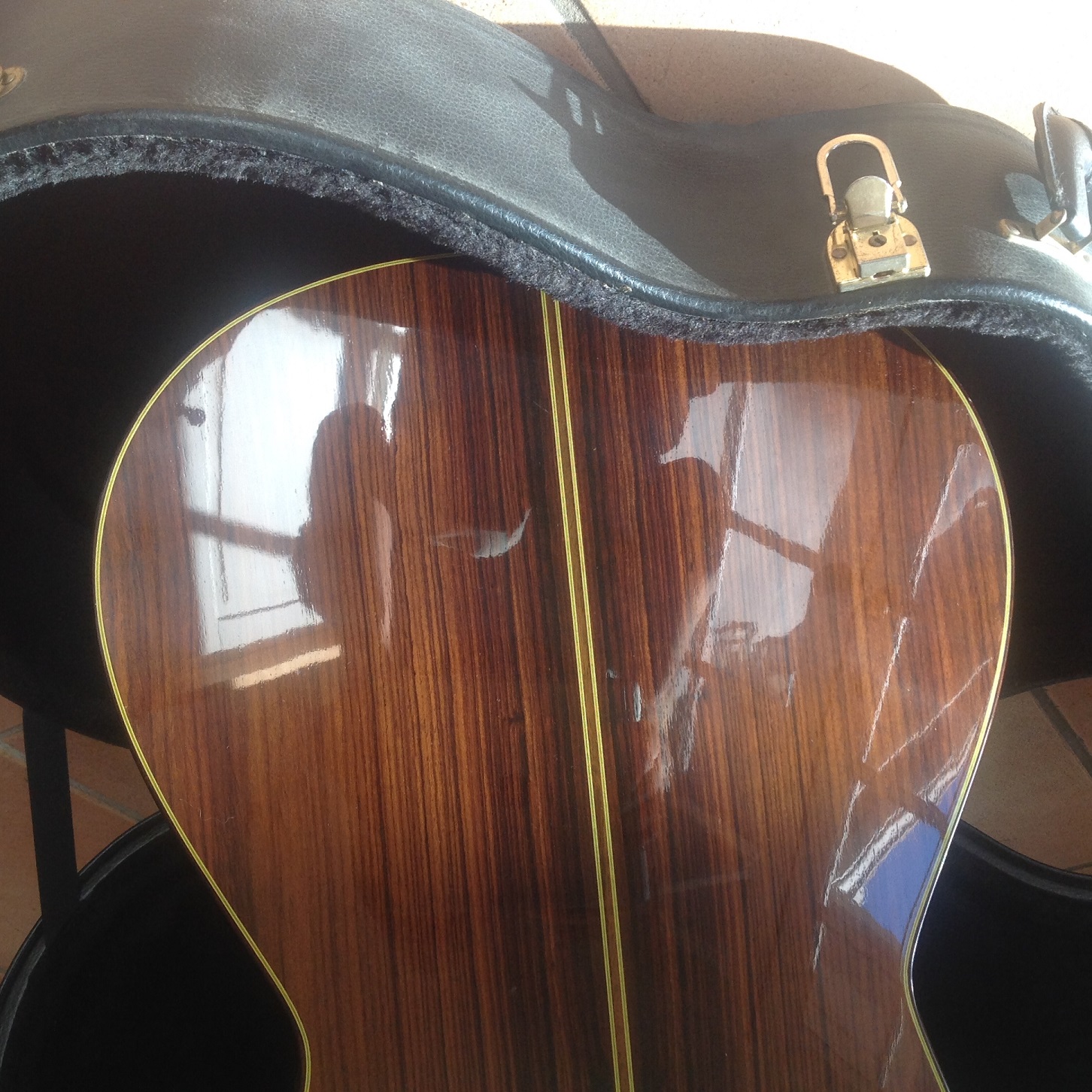|
estebanana -> RE: Should I sell my classical guitar? (Feb. 2 2016 0:53:46)
|
quote:
In the spirit of disseminating important info, can you point to some examples? It all looks "brown" to me with straight grain.
It's not a big deal, today East Indian Rosewood that suppliers commonly sell comes from plantations. In the past much IR came from larger wild trees.
There is no difference in the tree, but larger trees are bigger in diameter and the wood and figure looks different. Larger trees render lumber with less wood near the center of the tree and less wood near the outside of the tree. The guitarmakers Goldilocks locks zone for wood is wider in old growth trees. The larger trees usually have more wood for the sawyer to choose from and they can cut better backs and sides from each piece.
For making guitar backs generally a tree needs to be a minimum of 18" in diameter to avoid the center and cut off enough of the outside layers of the tree to get a back that is a nominal dimension of 8", the usual rough width of a back. Older trees give the sawyer more room mainly away from the center of the tree, which gives more room to get backs with less flat grain. A lot of Indian wood you can get today is from smaller diameter plantation trees and they often push the limits of how much they can cut from a smaller diameter log. If you have a trained eye you can see which lumber comes from smaller trees vs. older lumber that came form larger trees.
Larger trees are still available, but they are not as common as then used to be in the market place. Smaller trees which render wood cut closer to the margins of acceptability are far more common today. If you make guitars or are a seasoned wood worker you can see plainly which is which. To an unskilled eye most Indian rosewood may look all same. The older larger tree are preferred by hand builders. Backs from smaller logs may have close wavy grain near the center join of the back, while at the same time show some flat grain in the lower bouts. Backs from larger premium trees will show even grain from side to side, or show some beautiful marking or patterning in the grain like striations of gold and brown, but still maintain a nice even grain with not center grain or flat grain. That kind of quality only comes from bigger, older trees which are in high demand, but less common on the market.
Often times today the quality of the Indian rosewood is not as good, it can be excessively purple and also pithy. Some rosewood is soft and crumbly, which is really bad for making bridges. A lot of bridge blanks I reject are pithy, they have been cut from young small trees near the outside of the tree. Terrible wood for bridges. A lot of the rosewood sold for bindings is also poor quality, because it came from young trees and is cut from stock that was not good enough for backs and sides. It shows grain returns and twists, and warping and poor color, and excessive color bleed or the purple.
In the days prior to the internet guitar suppliers catering to beginners and hobby builders Indian Rosewood sets from old growth lumber were available and the standards were higher. The suppliers also sold to professionals and professional manufacturers like Martin, bad lumber would be rejected or remain unsold because guitar makers knew the difference between wood from small trees and premium wood. The wood was also rough dimensioned for the guitar maker and sold as wider rib stock, the rib stock was intentionally cut wide so a maker could rip the binding stock off the edge of the rough rib. Today the suppliers cut the rib stock narrower and sell the binding as a separate item.
Not only is the older wood more difficult to come by, but the sellers cut the stock smaller. So anyway, when a repair guy or maker sees an older Indian Rosewood guitar that has nice striated wood with good grain from side to side and no transition to slab cut wood it means old nice wood. Also once in a while a one piece back pops up or even a slab cut back that has beautiful markings. So much harder to find today.
Does that clear up any misunderstandings?
|
|
|
|






